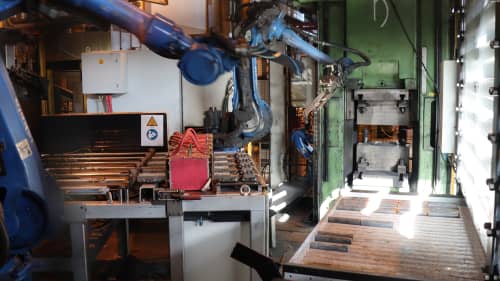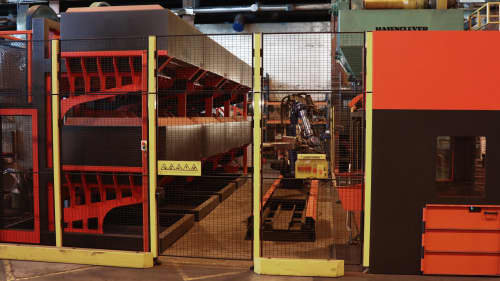Improved Production Efficiency at Kverneland Group Klepp Following Rebuilding and Production Updates
Kverneland Group Klepp has completed extensive production upgrades as part of the company’s commitment to innovation, sustainability, enhanced production stability, and increased efficiency.
The Klepp production site spans over 77,000 m², and Kverneland Group is one of the world’s leading manufacturers of ploughs and associated equipment. The improvements include the installation of new induction furnaces, upgraded tool systems, and optimised processes in the largest forging and forming facility, as well as in the production of Knock-On® holder parts.

The Knock-On® system from Kverneland Group, made from heat-treated steel, is designed for quick and easy replacement of wear parts on ploughs and cultivators. The facility producing Knock-On® parts had experienced some operational challenges, such as reduced uptime, lower machine availability, and variations in the finished products. These issues were identified as being related to complex processes, furnace performance, and handling operations.
The project involved the reorganisation of robots, as well as upgrades and the development of new tools tailored to the facility, and process improvements. Gas furnaces were replaced with an induction furnace, eliminating gas consumption for this forging facility. This has led to significant economic and environmental benefits, with a reduction in energy consumption and an estimated CO2 reduction of at least 40,000 kg per year.
“With the improvements made to the Knock-On® holder facility, we expect to reduce energy consumption by 85% per product. After just a few weeks of the new setup being operational, we noticed a significant improvement in stability, and we are well on our way to achieving our target of over 95% uptime,” says Runar Jåtun, mechanical engineer at Kverneland Group.
Additionally, the largest forging and forming facility has undergone a substantial upgrade. Here, steel components are heated to a maximum of 1,250°C before being forged or shaped for use in our agricultural equipment. This type of process is highly energy-intensive, and the facility was nearing the end of its lifecycle, making it necessary to find a more efficient and sustainable solution.

The project team from left; Oddvar Tjåland, Frode Bjerga, Runar Jåtun, Jan Rune Gjertsen, Tom Arild Undheim, Nils Erik Sviland, Alf Aurheim, Heine Hjorteland, Harald Hjorteland and Glenn Rimestad
After several unsuccessful attempts to find a satisfactory solution from external furnace suppliers, the project team at Kverneland Group Klepp decided to develop an in-house solution. The concept, design, fabrication, and testing were all carried out by internal resources. The transformation away from fossil fuels and the reduced environmental footprint enabled partial funding from Enova, which promotes Norway’s transition to a low-emission society.

The solution has resulted in a highly efficient and flexible system that eliminates direct greenhouse gas emissions, reduces energy consumption, and simultaneously increases production efficiency. The project serves as an example of how sustainable choices can drive innovation while delivering significant benefits to both the environment and the business. The forging and forming facility, A280, has achieved an 87% reduction in energy consumption, equivalent to the average electricity consumption of approximately 200 households, based on figures from Statistics Norway.
The upgrades to Kverneland Group Klepp’s production represent a significant step forward, and the positive results are a direct reflection of the hard work that has been put in. Kverneland Group will continue to build on the group’s commitment to innovation and sustainability.
November 2024, Klepp Norway
Download the complete press release here
